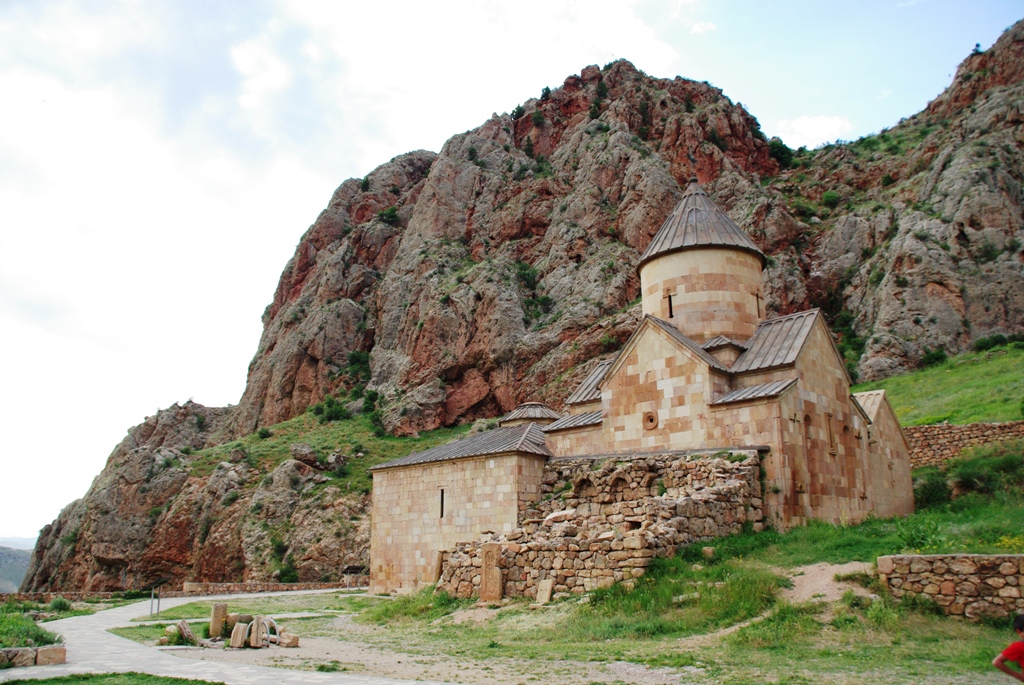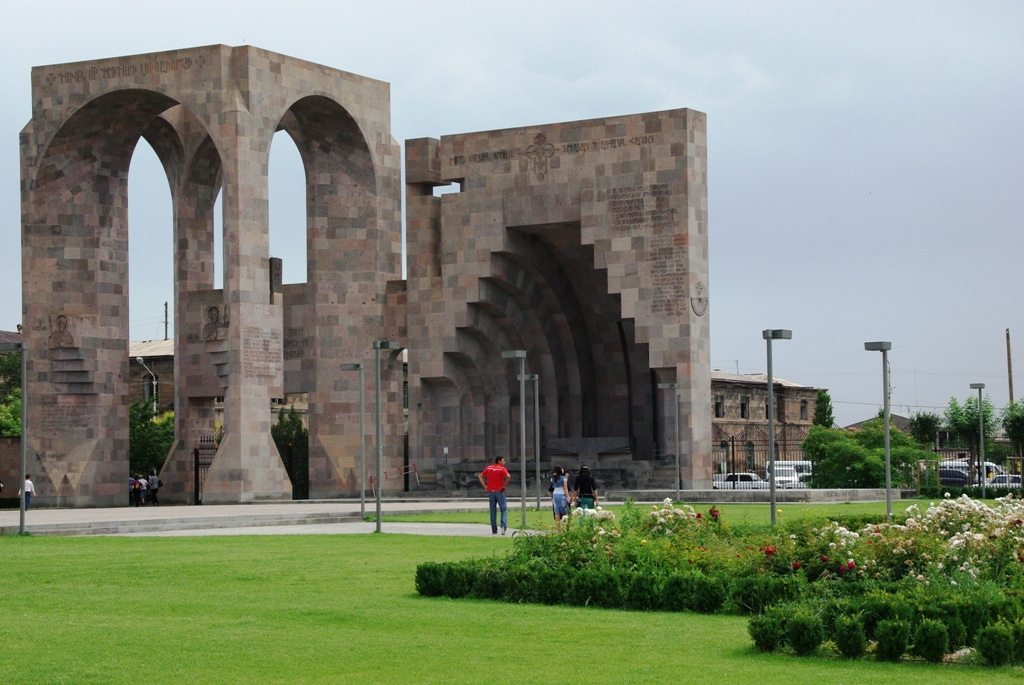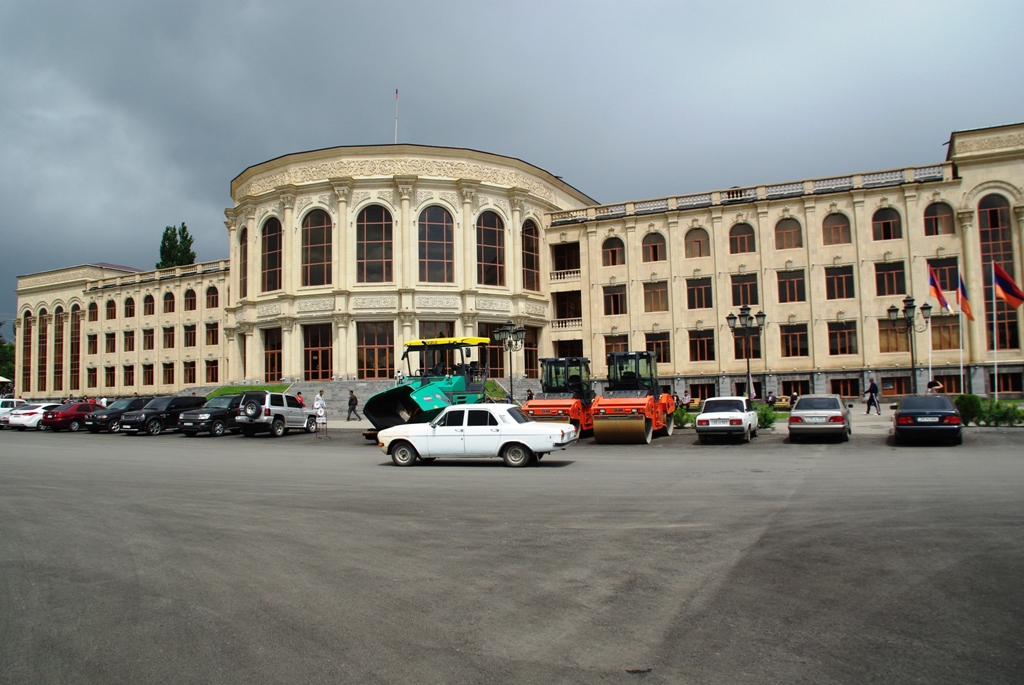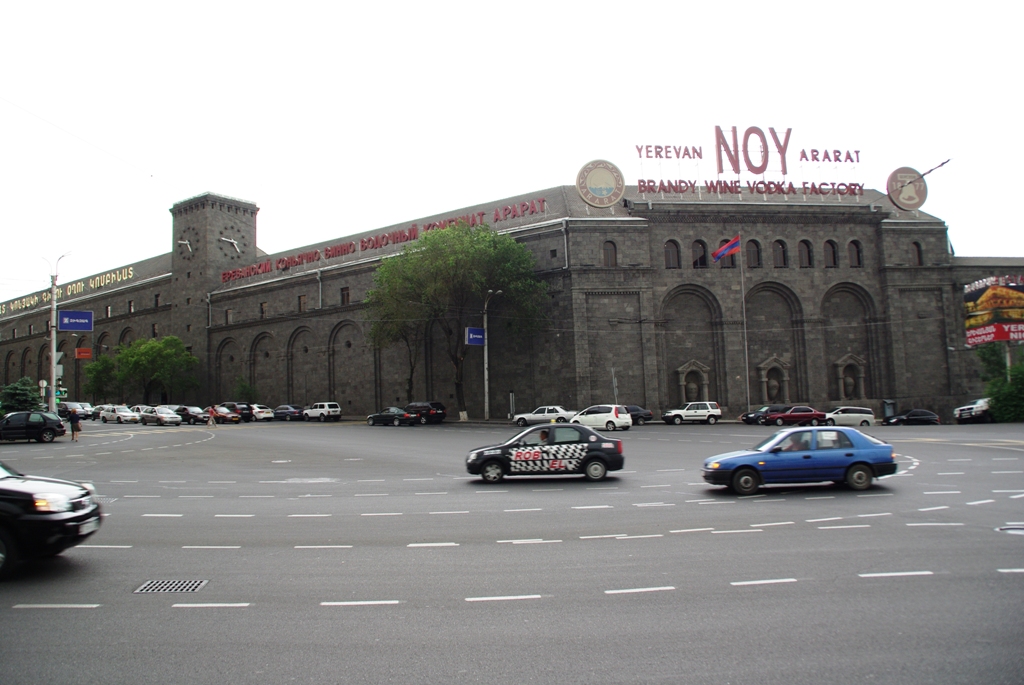According to www.omiglot.com there are only 18 types of writing in use in the world. Two of them belong to the 3.2 million Armenians and 4.7 million of Georgians. Statistically we can say that 0.11% of world’s population uses 11,1% of world’s writings. But we can’t look at it only through statistics, because there is too much of beauty in both countries to even consider statistics.
Arriving at Caucasus
Because Tbilisi has better connection than Erevan it is rational to fly to Georgia, especially now that low budget flights for Georgia have started to fly to Kutiasi between Tbilisi and the Black Sea.
The first impression of the Tbilisi airport was more than positive and the formalities were really just that and lasted only a minute or so. Because I continued towards Armenia I rented a car and I must give credit to the local geo-rent-a-car agency, with great prices, but cars that don’t look like much. This might be a turn off, but once you see the local roads you get to appreciate the old robust off road vehicle you’ve got and are glad there are so many scratches on it nobody will notice an extra one you’d make. If you want to enter Armenia with a Georgian vehicle you will need special papers though, so you should think ahead because sorting the paperwork might last up to a week.
There’s about an hour’s drive from the airport to the border and after the formalities we enter Armenia.
Armenia is a mystical country wedged between Azerbaijan, Georgia, Turkey and Iran and is the country that first embraced Christianity. Armenia does not have a coast although t is right on the edge of the Caspian Sea and is surrounded by countries that are rather hostile towards them. It is still technically at war with Azerbaijan for the conflict of Karabah (the ceasefire was signed in 2008). In the past Turkey had military action their and Armenians still demand a hearty apology for the massacres done to their people in 1894 and 1915. This is why you can enter Armenia only from Georgia or Iran.

Despite the harsh situation Armenia with its 3 million of population and 30.000km2 remains a welcoming country with superb cuisine and even better cognac, which was introduced to Winston Churchill at the Yalta conference during WWII. Since then the British P.M. swore it was the best cognac in the world. The people of Armenia are also friendly and welcome visitors. There are many mystical monasteries, natural sights and lovely towns which have rich and long history.
Erevan, the national capital with 1,2 million of population is at the elevation of 865m and 1390m, which is very important if you travel there in the summer heat. Erevan is not an early to raise city, but it also stays awake late in the night. There is almost nothing left of the old Erevan city, because it was hit by numerous devastating earthquakes in its history. The oldest recorded earthquake devastation is from 1679, when the city was levelled to the ground, but was hit several times afterwards as well. Even though the city doesn’t have a historical centre it draws attention with the modern buildings. The most pompous buildings are the cascades, which are built into the mountain like stairs with exhibition spaces on the inside. Apart from the cascades you should also take the time to explore the fountains which are alive with various colours and music rhythms. But the biggest attraction of Erevan is the Cognac! It is produced in two large distilleries, which originate from the same one. Both carry the Ararat as part of the name, but the original one also has the title Noy. But the Ararat cognac itself is bottled in another venture… but I’ll talk about cognac latter.
Erevan, like the whole of Armenia, is known for the superb cuisine and it’s really easy to find a traditional restaurant with traditional meals. The local wines are also great and that’s why Armenia definitely is the real lovers of good nourishment.
Vagharshapat or also Echmiadzin is the largest town of the Armavir province and also famous for the oldest church in Armenia and third oldest in the whole world. The town only has 60.000 people, but is the fourth largest town in the nation. It’s well worth a visit and you should see the monastery complex with the cathedral of St. Etchmiadzina built between 301 and 303 and further added in 480, 618 and 1658. The complex also has a restaurant which is part of the old mess hall. They also have the old printing facilities, theological school… and you can reach it from Erevan by a very cheap public transport by popular »maršrutka« or otherwise put – a minibus (or maybe a maxivan?).

The Sevan Lake is the largest Armenian lake on the elevation of 1.900m (the surface of the lake retreated and became shallower for 16 metres in the past 80 years). It covers the area of 1.360 km2 with 200km of shoreline and is only 60km from the capital of Erevan. It’s not only a popular tourist destination, but is also has a historical significance, because it is the seat of the 9th century monastery built on a peninsula of the lake – the Sevanavank monastery. I especially recommend the visit in the hot summer days. You can easily reach it by before mentioned “maršrutka”.
Gyumri is a town only a few kilometres away from the border with Turkey (which is closed) and only a few kilometre rom the border of Georgia. After the devastating earthquake of 1988 (the devastation can still be seen today) the town got a new coating. It’s an interesting town to visit, only 100km from Erevan, and you should visit it in combination with Vagharshapat, for you really can see both towns in a single day. Apart from the history the town is also an important military base, for Russian trans-Caucasian forces still have their 102nd army base here.

Armenian cognac that Sir Winston Churchill first tasted during the peace conference at Yalta in February 1945, became an instant hit with the P.M. Since then the Soviet leader Stalin kept sending it to Churchill and it was this cognac that saved the master distiller. It happened with one shipment that Churchill mentioned to Stalin the cognac was not of the same quality as before and the distiller got sent to a work camp – gulag – in Siberia. But it was Churchill’s refined taste that saved the distiller, because there was no other that could prepare the very same cognac with such a refined taste and the distiller got released to return to Erevan and keep making the supreme spirit.
You can see the process of preparing the Armenian cognac in the factory of Ararat, where the production line was moved from the original venture, as well as in the Noy Ararat, which stands in the location of the original distillery. This one is in the location of the former Persian fortress from the 16th century that got levelled to the ground in the earthquake 1858. In 1877 they started producing wine here and it was taken over by Shustv – the leading Russian producer of alcohol beverages. The main turnover for the cognac production came after the world expo in Paris in 1902, when Armenan brandy was allowed to use this name cognac. Due to the quality they became the main supplier of the Russian royal palace by 1912 and they still remain the main supplier for the Kremlin up to this day. The factory was abandoned after the collapse of the Soviet Union but was re-established in 2002. Ever since you can also see the history of the cognac production. I suggest you visit both factories, but in case you can’t visit both, it’s better to go to Noy Ararat, because you’ll not only get to see how cognac is produced and taste it, but you’ll also get to see the history of this refined spirit. You’ll also get to taste the history itself, by getting a sample of the exclusive 1924 high quality wine with a special rich taste.

A few secrets of cognac:
- You pour just enough cognac in a glass that when you place it horizontally it reaches the edge of the glass.
- We fill the glass horizontally and place it upright and wait until drops start to condense on the arch of the glass. The time condensed drops take to reach the rest of the cognac in the glass marks the age of the spirit (as many second, so many years) – it’s a tested method.
- Cognac is aged in barrels. It is the process in the barrel that ages the cognac. Once it is bottled it will not age any more, regardless how long we leave it standing.
- You taste the bouquet by turning the glass 30 cm away from the nose.
- We can test the cognac for added sugar (which is not allowed) by spilling a few drops to the hand and wait for the cognac to evaporate. If the hand becomes sticky than the sugar was added.
- Before consumption cognac is warmed to body temperature by holding a glass with one or both hands.
- You never put ice or lemon in cognac.
Where to sleep?
There are two
Youth Hostels in Erevan, which are part of the international IYHF chain, where you’ll get a bed and breakfast for a bit less than 6€ (in a multi-bedded room). For a more private room (two bedded) you’ll pay a little less than 30€ per night with breakfast (for two people). You can find links to both hostels at
www.youth-hostel.si or
www.hihostels.com.
Getting to Armenia?
Due to lack of low budget flights to Armenia the best possibility is from Georgia, because a flight to Erevan can cost a few times more than that to Georgia. You can reach Erevan from Tbilisi either by rail or bus at affordable prices.
Since January 2013 EU citizens do not need a travel visa to come to Armenia.
More in the next issue of Globetrotter where we get to know in detail Georgia.